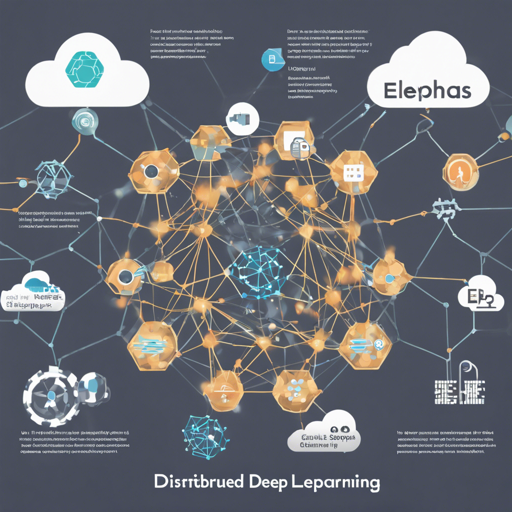Welcome to your go-to guide on utilizing Elephas, a powerful extension of Keras that enables distributed deep learning using Apache Spark. In this tutorial, we’ll walk you through the essential steps of getting started, integrating Spark, and optimizing your deep learning models effectively. Let’s dive in!
What is Elephas?
Elephas is an extension that allows you to run distributed deep learning models at scale by using Keras with Spark, enabling the processing of massive datasets seamlessly. It preserves Keras’s simplicity and usability, making it easier for developers to prototype distributed models.
Getting Started
To begin using Elephas, you first need to ensure that it’s installed. Here’s how you can do that:
- Open your terminal/command prompt.
- Run the command:
pip install elephas - After this, Elephas will be ready for use, and Spark will be installed through PySpark automatically!
Integrating Spark
Once Elephas is installed, you can train a model as follows. Start by creating a local PySpark context:
from pyspark import SparkContext, SparkConf
conf = SparkConf().setAppName('Elephas_App').setMaster('local[8]')
sc = SparkContext(conf=conf)Building a Keras Model
Next, it’s time to define and compile a Keras model. Here’s how you can do that:
from tensorflow.keras.models import Sequential
from tensorflow.keras.layers import Dense, Dropout, Activation
from tensorflow.keras.optimizers import SGD
model = Sequential()
model.add(Dense(128, input_dim=784))
model.add(Activation('relu'))
model.add(Dropout(0.2))
model.add(Dense(128))
model.add(Activation('relu'))
model.add(Dropout(0.2))
model.add(Dense(10))
model.add(Activation('softmax'))
model.compile(loss='categorical_crossentropy', optimizer=SGD())Here, you can think of creating a Keras model like building a multi-layered cake. Each layer adds a distinct flavor and texture, much like how each layer of a neural network adds complexity and capability to model the data.
Creating an RDD
After defining your model, create an RDD (Resilient Distributed Dataset) from your training data:
from elephas.utils.rdd_utils import to_simple_rdd
rdd = to_simple_rdd(sc, x_train, y_train)Training Your Model
Now that you have your Spark context and model ready, you can initialize a SparkModel and fit it to your RDD:
from elephas.spark_model import SparkModel
spark_model = SparkModel(model, frequency='epoch', mode='asynchronous')
spark_model.fit(rdd, epochs=20, batch_size=32, verbose=0, validation_split=0.1)Running Your Script
Finally, you can execute your learning script using:
spark-submit --driver-memory 1G your_script.pyWhen running your script, it may be necessary to increase the driver memory, especially if your model has a large set of parameters.
Troubleshooting Tips
If you encounter issues during installation or execution:
- Check if all dependencies were successfully installed.
- Ensure that your Spark environment is properly set up and configured.
- If the processing is too slow, consider optimizing your Spark configuration, such as increasing the number of nodes.
For more insights, updates, or to collaborate on AI development projects, stay connected with fxis.ai.
Conclusion
Elephas makes distributed deep learning accessible and powerful with straightforward integration into your Keras workflows. Utilize this framework to efficiently handle large datasets while leveraging Spark’s capabilities.
At fxis.ai, we believe that such advancements are crucial for the future of AI, as they enable more comprehensive and effective solutions. Our team is continually exploring new methodologies to push the envelope in artificial intelligence, ensuring that our clients benefit from the latest technological innovations.

